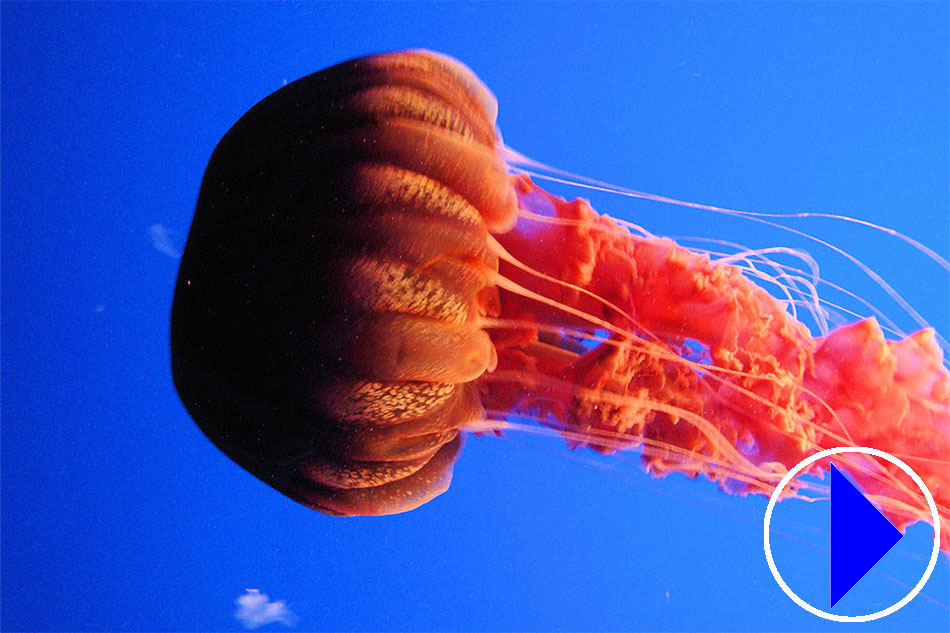
SEA NETTLE JELLIES, LIVE WEBCAM
- Local Time
- Location: Monterey Bay Aquarium, California, Unitred States
- Source: Monterey Bay Aquarium
-
Info: Live sea nettle jelly webcam at the Monterey Bay Aquarium in the Open Sea Exhibit.
Not all jellies sting, but the sea nettle has long tentacles and frilly mouth arms which are covered with stinging cells to paralyze its prey.
THIS CAMERA IS ONLY LIVE BETWEEN 7AM AND 6PM LOCAL TIME
View the location of the Monterey Bay Aquarium in California,wirh Mapquest
More info: The Pacific sea nettle, also known as the West Coast sea nettle, and brown sea nettle, is a species of jellyfish. It may be present in the open sea but generally it is found near the surface, drifting in bays, estuaries and lagoons. It is native to the Eastern Pacific Ocean from Canada to Mexico
Video showing the 12 biggest Jellyfish:
Adult sea nettle jellyfish have a distinctive golden-brown bell with a reddish tint and four extending oral arms and numerous maroon tentacles hanging down from around the perimeter of the bell. Sea nettles can reach a length of 4.5 metres and the bell can grow to a diameter of 30cm. The bell of the Pacific sea nettle is made of three layers: the outer layer (epidermis); a thick, gelatinous middle layer(mesoglea); and the innermost layer (gastrodermis). Like all other jellyfish, the Pacific sea nettle is mostly water with a basic nervous system that allows the animal to respond to stimuli like light and smell.
In their adult stage called a “ medusa “ the males and females release sperm and eggs in to the water. The fertilised eggs develop into larvae which drift and settle on the sea floor and become small polyps. The polyps remain dormant throughout winter and then during Spring and Summer they “bud off” as tiny sea nettles and will grow into adults
Pacific sea nettles have a varied diet, which includes fish, comb jellies, floating snails, and other jellyfish. With a single opening that allows food to enter and waste to exit the body, the Pacific sea nettle’s thin tentacles sting and paralyze prey, while the longer, spiralling arms trap and transport the food to the mouth. Despite their sting (which is painful to humans but rarely dangerous), sea nettles are eaten by sea turtles, as well as several species of large fish and marine birds.
Additional information:

